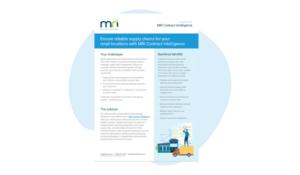3 trends to consider when planning the return to the office
Real estate occupiers have been rethinking the traditional workplace even before the COVID-19 pandemic. A year into the “new normal” of working from home, attitudes and market trends have shifted dramatically, and it’s become increasingly clear that the workspace will not look the same when employees are invited back into their respective offices.
Tenants need to meet the new and changing expectations of their employees, and organizations are being challenged to rethink their use of office space, consider the safety and well-being of their staff, and understand how hybrid and flexible work models impact the future of office planning.
1. How will offices be used once employees return to work?
Bringing employees back into an office setting won’t be as easy as it sounds. Some employees have settled into this “new normal” and believe that returning to the office full time would be detrimental to productivity, while others look forward to going back to the traditional workplace. As companies navigate changing attitudes, the office space will have to be made appealing again. The office won’t just be a place where work gets done – it will be a place where people come to collaborate. Rows of cramped desks might need to give way to new spacing requirements, and small common areas that once brought employees together for lunch could be expanded into large spaces that focus more on community than rest.
2. Ensure staff safety and wellbeing on a global scale
While companies look to turn their offices into more collaborative, spaced-out environments, many of them will still have to contend with frequently changing health and safety regulations across multiple continents, countries, and cities. In additional to keeping up disparate safety requirements, the culture of work is likely to impact different office locations. While some in the US and the UK may not be comfortable returning to the office, many employees in the APAC region have already returned to their offices comfortably. This will present a unique challenge for global companies.
3. Explore flexible, hybrid workplace models
Taken together, these dynamics paint a picture of a future workplace that focuses on flexibility and adaptability above all else. Each company, region, office, and employee has dealt with the impacts of the pandemic differently, and workplaces will need to throw out the traditional “one size fits all” office layout in order to best accommodate all of the disparate needs and changing market trends.
How technology can help you plan the future of the office
In response both to health guidelines and market trends that favour space, flexibility, and collaboration, workstations across the office will need to be spaced out, and in many cases, rearranged altogether with the help of space management tools. Creating enough space between desks won’t just help the property remain in compliance with local health guidelines, but it can also provide employees with peace of mind, boosting productivity. In addition, visitor management solutions can help offices cut down on foot traffic and manage all non-employee staff that enter the building – a huge step toward ensuring the safety and security of everyone on the property.
On the subject of desks being rearranged, organizations may also have to accommodate employees who don’t want to return to the. office. One of the things we’re seeing in the return to the office is that many people want to remain either fully remote or on a hybrid work schedule, meaning that not every desk within the office will be filled at all times. Taking on an approach of “hotdesking” – where several employees might be assigned to one desk at different times throughout the week – can help offices consolidate desks and desk space.
With companies using fewer desks as a result of hotdesking or even hoteling, commercial tenants might come to find that they no longer need as much office space as they once did. In these cases, landlords and tenants will need to potentially re-evaluate lease obligations and reach new lease agreements. Before taking on this process, both parties will need to have clear understandings of what’s in their leases so they can effectively communicate and agree upon new terms moving forward.
As landlords and tenants both look ahead to a time when offices will reopen, both need to be prepared to collaborate in order to address changing market trends and disparate needs among employees and other staff. Learn more about the trends impacting the return to the office.
Take your Retail Success to the Next Level with MRI’s Contract Intelligence
With the growing competition from online retailers, retail organizations are grappling with the complexities of supply chain management. Managing a network of product suppliers, navigating intricate contracts, and staying ahead of customer demands po…

